A Hard Day’s Night – One Ten East Log
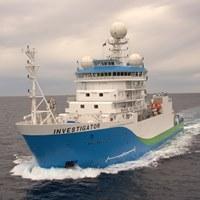
One Ten East Logs from the IIOE-2 voyage aboard RV Investigator will be posted on the WAMSI website during the month long voyage.
Log from One Ten East
The RV Investigator is currently undertaking oceanographic research along the 110°E meridian off Western Australia as part of the second International Indian Ocean Expedition. The voyage is led by Professor Lynnath Beckley of Murdoch University and the research is supported by a grant of sea time on RV Investigator from the CSIRO Marine National Facility.
| Date: May 25, 2019 | Time: 1200 AWST |
| Latitude: 27.5°S | Longitude: 110°E |
| Wind direction: SE | Wind speed: knots |
| Swell direction: SSW | Depth: 5651 m |
| Air temperature: 21.3°C | Sea temperature: 22°C |
| Notes: All’s well as RV Investigator travels northwards into warmer air and seas, about 200nm west of the Abrolhos Islands. | |
A Hard Day’s Night
By Prof Lynnath Beckley
(Chief Scientist IN2019_V03)
Aboard the RV Investigator we are approaching the middle stations along our 110°E line and have proceeded from cool, temperate waters to warmer more subtropical waters. Operations are proceeding smoothly – watches swop with 12-hour regularity, equipment gets deployed, samples get taken as per the daily roster and we no longer really know which day of the week it is!
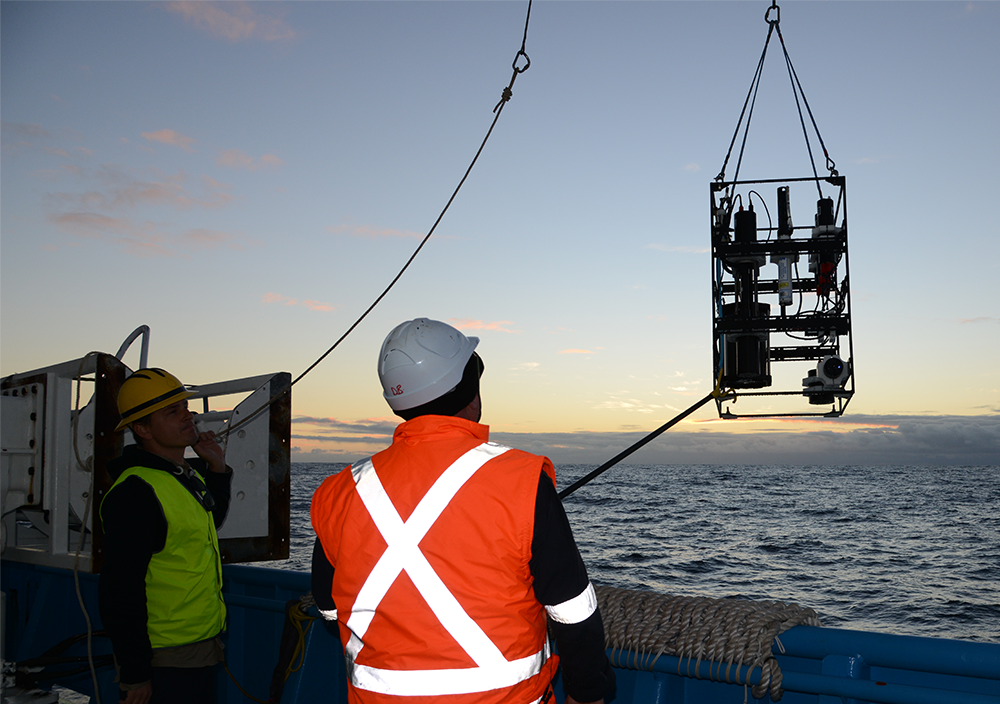 |
| Dr Matt Slivkoff (In-Situ Marine Optics) attentively watches his I-OP (Inherent Optic Properties) package with RV Investigator crewman Dennis Bassi, as the sun sinks over the Indian Ocean. Photo: Micheline Jenner AM. |
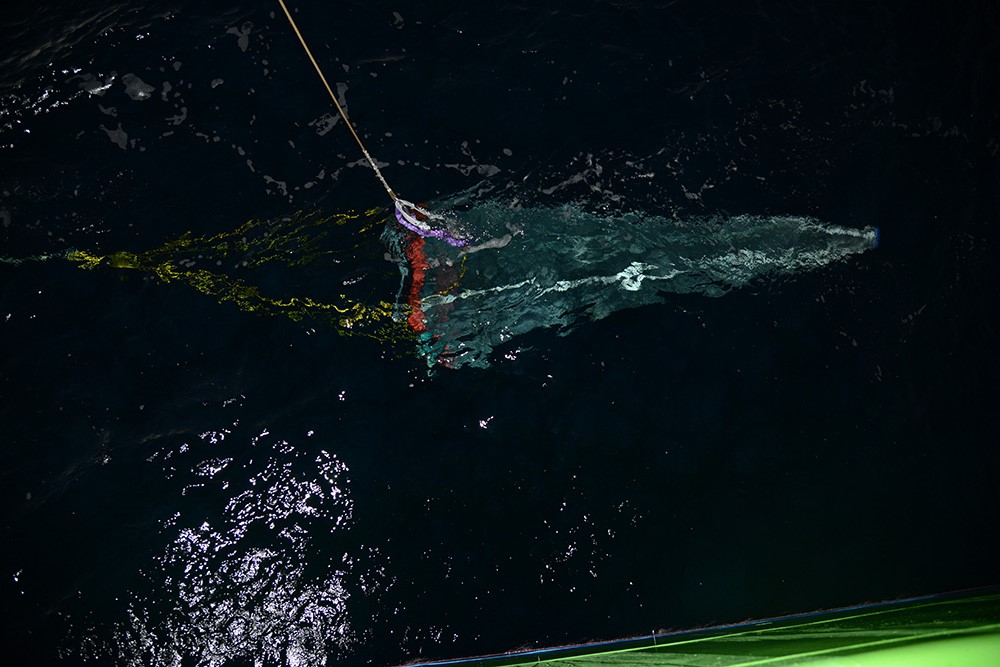 |
| The neuston net is deployed in the surface waters to catch organisms that migrate to the surface at night to feed, such as rock lobster larvae and lantern fishes. Photo: Micheline Jenner AM. |
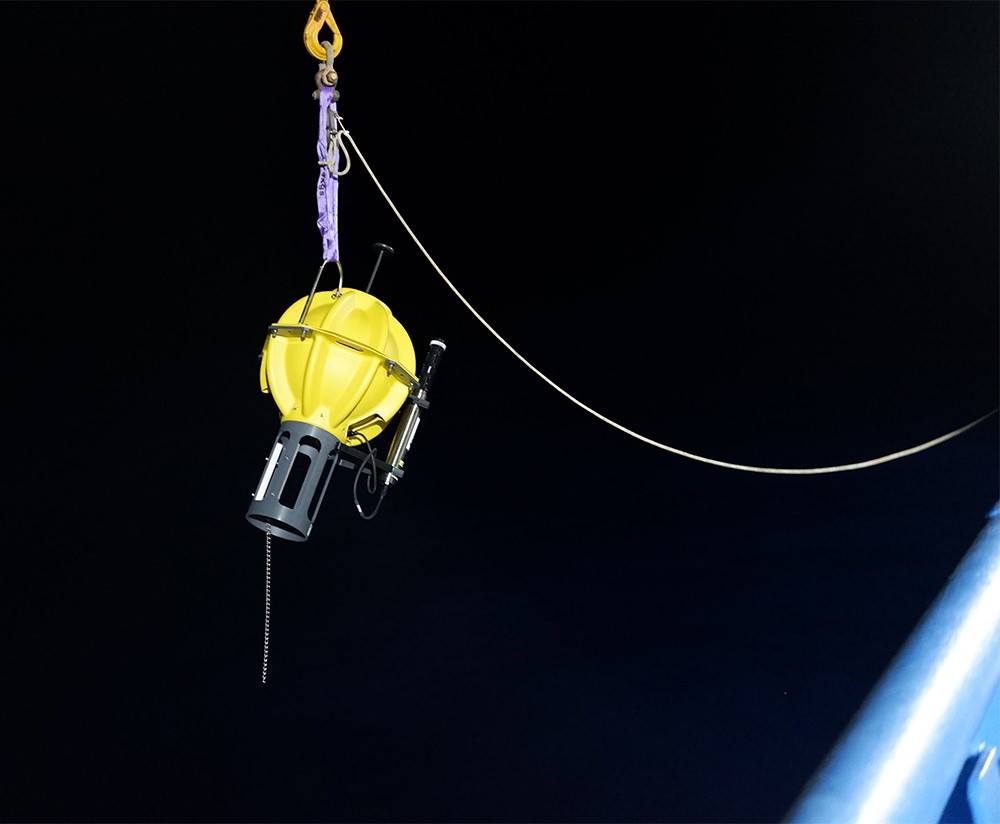 |
| Even in the dead of night instruments are deployed from RV Investigator. Here an APEX Deep ARGO buoy is being deployed for the Japanese Agency (JAMSTEC) as part of the international collaboration of the IIOE-2. Photo: Karlie McDonald. |
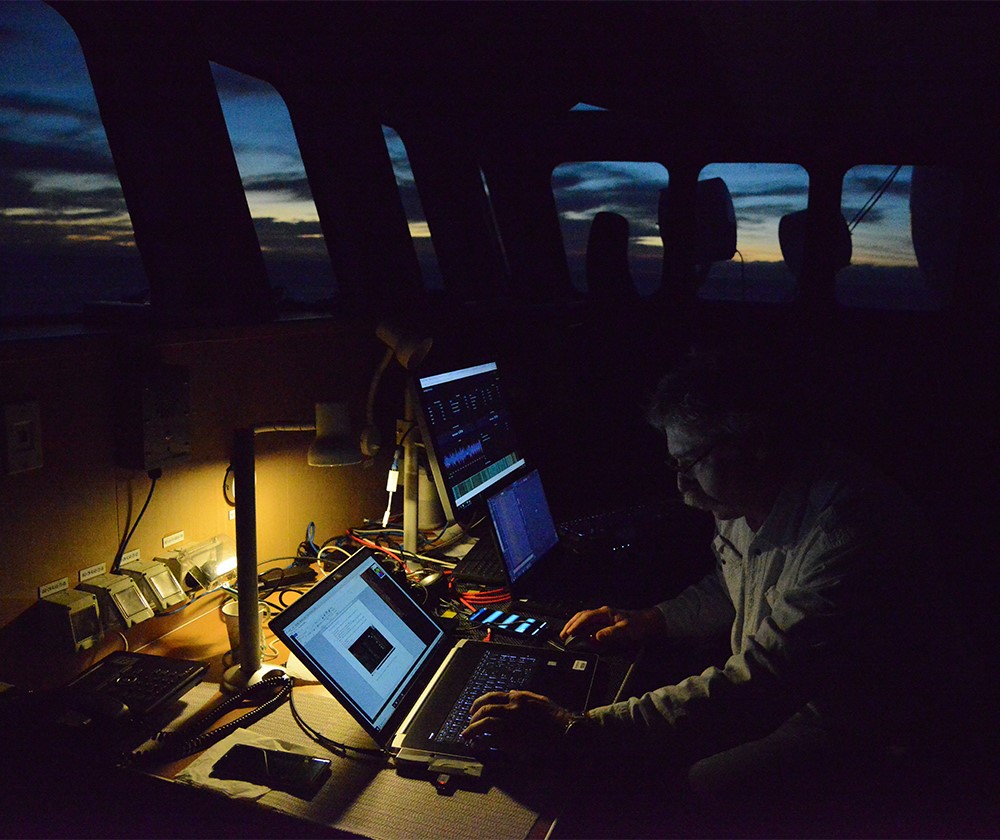 |
| Just after the CPR is retrieved and just before the deep CTD cast, in the pre-dawn hues, two sonobuoys are deployed in the water. Here Curt Jenner AM monitors the whale calls on the computer systems. Photo: Micheline Jenner AM |
And, yes, it must be near the weekend as the footy tipping competition is in full swing!
Be sure to follow our daily Log from One Ten East at https://iioe-2.incois.gov.in or www.wamsi.org.au

